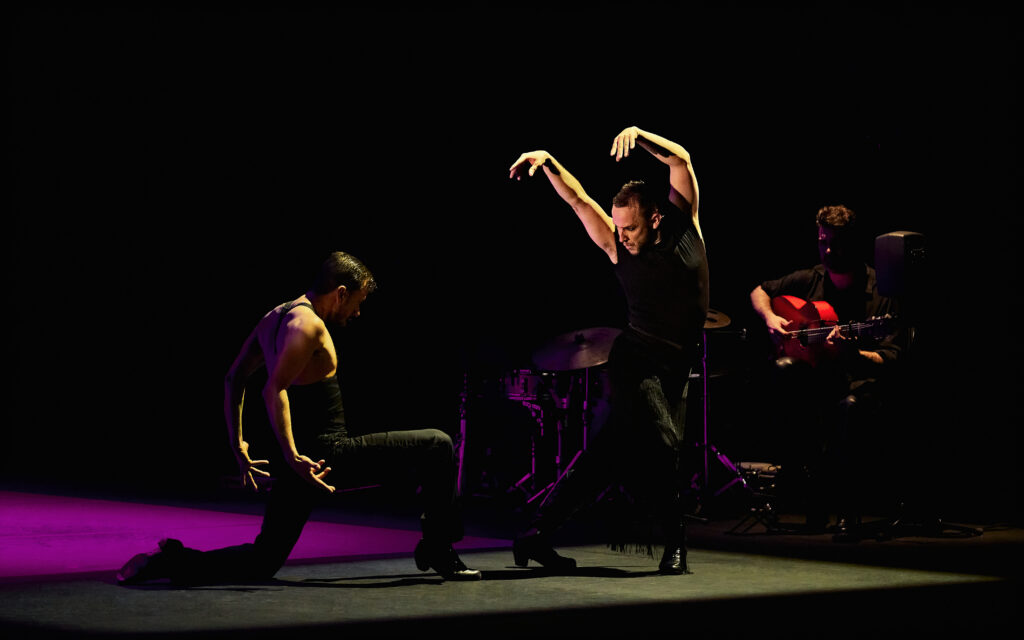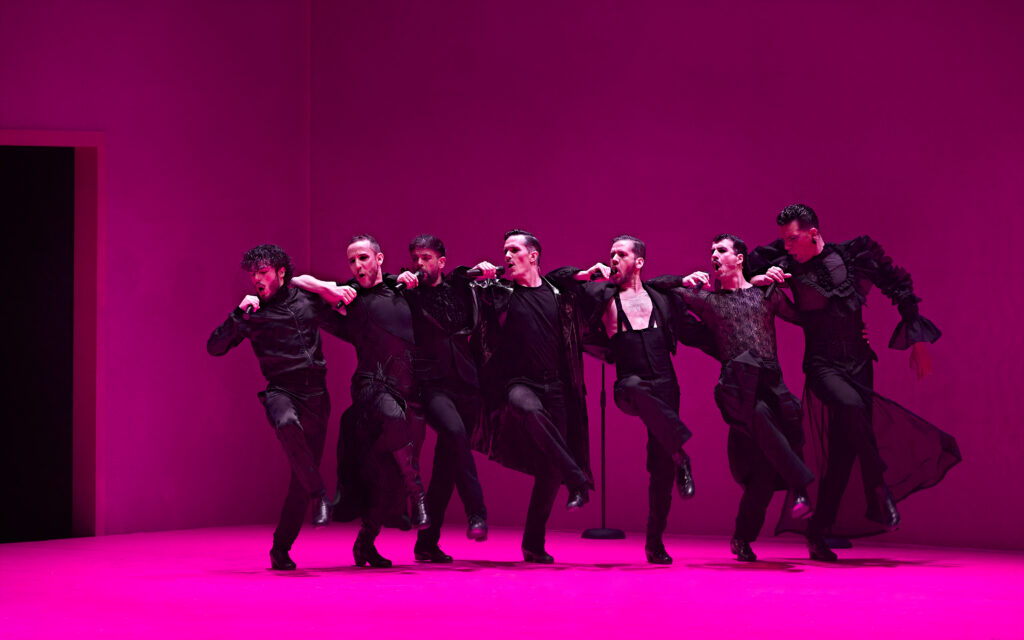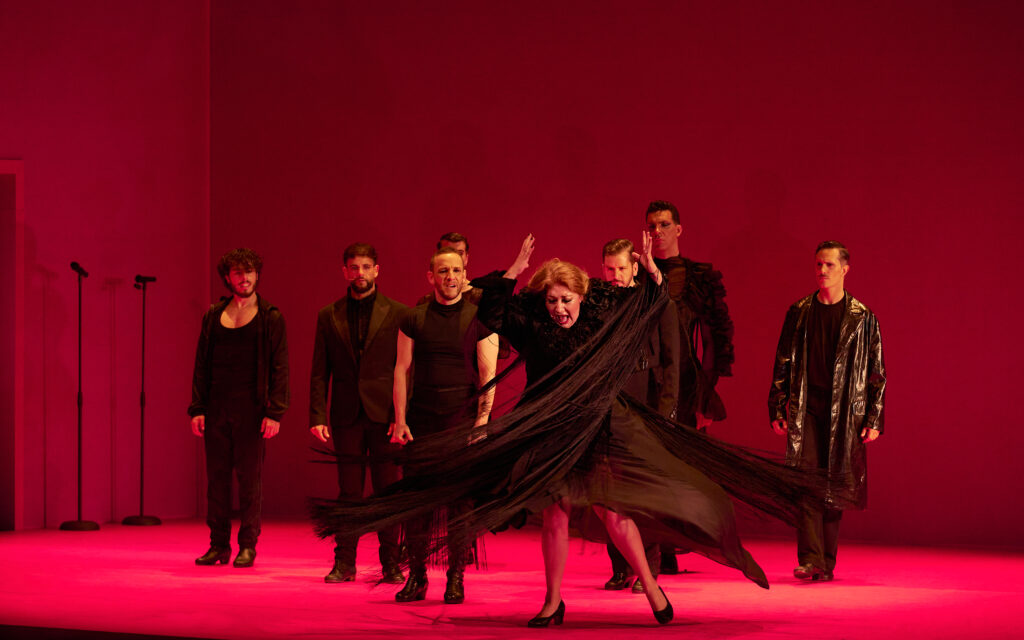Flamenco artist Manuel Liñán shook up levels worldwide with 2019’s ¡Viva! In it, he danced in a bata de cola (ruffled-train costume) and mantón (fringed scarf) amid equally clad males, all glorious at heel work and floreo (hand prospers) which are historically reserved for ladies. That wit and grit has characterised Liñán’s profession for over twenty years. An exacting stylist desirous to discover past technical and conceptual borders, the performer-choreographer-director turns extra pensive in his current Muerta de Amor (Dying of Love), which opens Flamenco Pageant Miami XVI on the Adrienne Arsht Heart for the Performing Arts, March 5, earlier than shifting on to New York Metropolis Heart March 7. Because the U.S. debut of the evening-length work drew close to, Liñán spoke with Dance Journal in Spanish from his native Granada, Spain, about this intensely private creative assertion.
Inform me concerning the title Muerta de Amor.
Colloquially the phrase acknowledges—in a hyperbolic method—how strongly you’re feeling the pleasure of one thing you’ve skilled. I take advantage of the female kind as a result of that’s extra intimate to me, and I typically check with myself that method. However it connects with a query that’s intrigued me for a very long time: What’s love? My work is a search and never a solution, and turns into a celebration as my relationships with males emerge—what they’ve imprinted on my physique, how that’s translated in my dance.

Has that been current in earlier works?
Completely. Each work comprises what your physique carries into it. However right here I explicitly dance to the feelings relationships elicit, whether or not affectionate or poisonous. Did love depart me with a style of seduction? Or was it platonic? Need fires me up creatively. I’ve typically exaggerated the character of my relationships, even invented elements of them, due to that have to really feel alive.
Did you begin with a whole imaginative and prescient?
No, this took place step-by-step. I first selected the interpreters, who needed to have an alluring presence. And I needed them to sing. I began with improvisations alongside José Maldonado, a solid member who additionally choreographs. The work got here to incorporate components like microphones, which give us a voice, including energy to expression.

With 4 accompanists, together with guitarist Francisco Vinuesa, contributing an unique rating, what characterizes the music?
It attracts from the copla, a preferred Spanish style. Coplas sing out about love in a really dramatic method. They’ve been on my soundtrack since childhood. We carry out them flamenco model—as an example, in bulerías and soleás [festive and woeful flamenco dance rhythms, respectively]. The copla typically has a disguised homosexual message, the lyrics addressed from one man to a different, and I’ve used a few these, although their energy is not only for the initiated.
Does Muerta de Amor have a plot?
Not particularly, however there are a number of dramatic strains working by it. These come from my private experiences, however I imagine such love conditions have occurred to most of us one time or one other.
Are there girls within the solid?
One, and he or she’s the Nice Lady, the Muse, the cantaora who lights the fires, portrayed by Mara Rey, an artist of unbelievable power. Her singing is acutely private, but she stirs up the motion round her.

What has been the best problem in your journey?
Bringing ¡Viva! to the stage, showing in a bata de cola and a wig. I used to be already 38 years previous then. It took me that lengthy to validate my need to bounce dressed as a girl—to ensure that it wouldn’t be frivolous or passing however stay a part of my theater. It needed to be transcendent. I began dressing up in girls’s garments in secret after I was 8. If there was a fancy dress celebration and I placed on my mom’s garments, folks laughed at me, making me really feel I used to be doing one thing incorrect. I sidelined that need till in the future I stated: “Sufficient. That is who I’m, what I would like, and I not really feel like hiding it.”
Has the scenario modified for younger males who wish to dance as a bailaora right now?
Fortunately, sure. Once I first tried to be taught the strategy of dancing in a bata de cola, I used to be informed it wasn’t allowed for males. Now they can examine that facet of our artwork kind in conservatories.
And also you’ve contributed to that.
I take into account it my number-one reward. My biggest pleasure could be that no boy ever feels the concern I felt dressing up as a girl. That might be the actual change.

